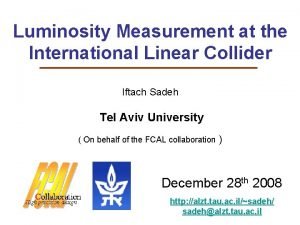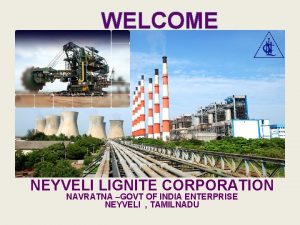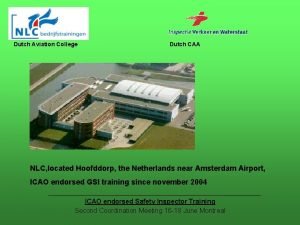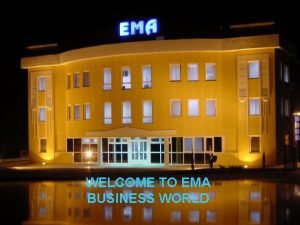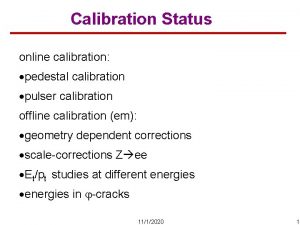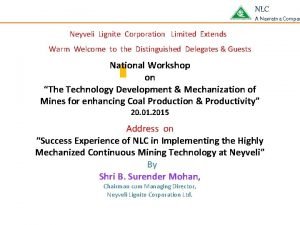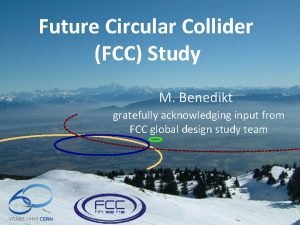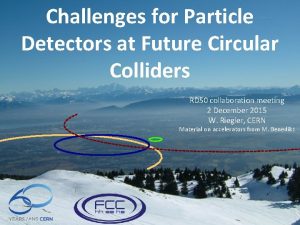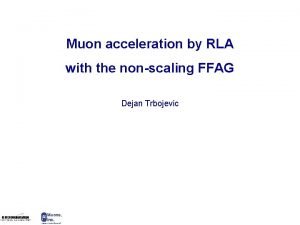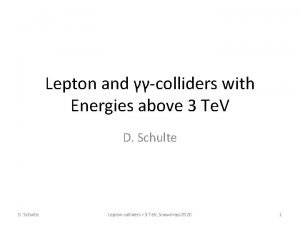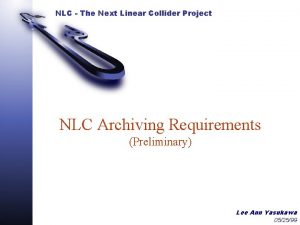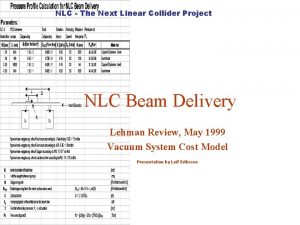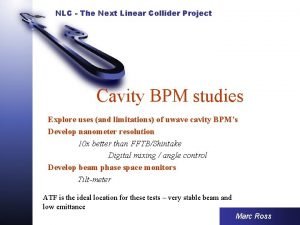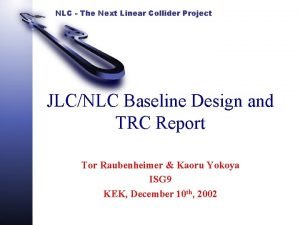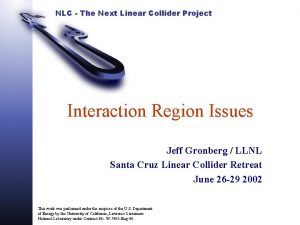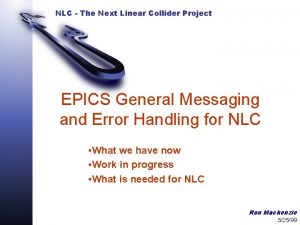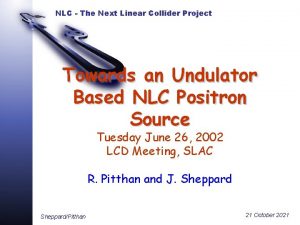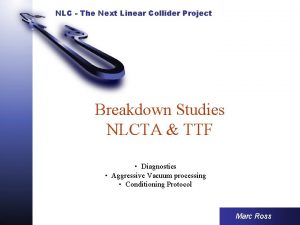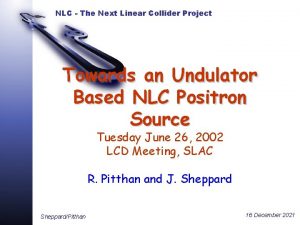NLC The Next Linear Collider Project Digital RF











- Slides: 11

NLC - The Next Linear Collider Project Digital RF at Fermilab – BPM’s for the Recycler and the Tevatron RUN II has aggressive luminosity goals – 11 fb-1 in the next few years – How to help? Marc Ross

Synchronous Digital Sampling – Direct down conversion sampling clock effectively LO - importance of sampling clock stability Digital RF How it really works Nov 22, 2002 Marc Ross/SLAC Author Name Date 2 Slide #

Commercial Digital I/Q receiver Integrated by Echotek

Nov 22, 2002 Marc Ross/SLAC Author Name Date 4 Slide #

Luminosity Outlook for Run II • There are 267 weeks until Jan 1, 2008 • At a weekly integrated luminosity of 7000 nb-1/wk, the total will be 1. 8 fb-1 • Fermilab’s original estimates for Run 2 were 15 fb-1 • Present estimates are 6 to 11 fb-1 – Exp growth rate must be 80 weeks for original goal – 135 weeks for present (low) goal • A successful Run II is very important for HEP Nov 22, 2002 Marc Ross/SLAC Author Name Date 5 Slide #

• Run II began in March 2001 • SLAC staff were asked to participate in early 2002 – Work in progress: Beam – Beam and … • CERN, BNL accelerator physicists are engaged • Reviews have indicated a need for improved instrumentation Nov 22, 2002 Marc Ross/SLAC Author Name Date 6 Slide #

Status: beam instrumentation: BPM’s • There are 6 rings in use (or intended) for Run II • The Tevatron, Main Injector and Recycler are the largest, each with several hundred BPM’s – The most mature, functioning BPM system is that developed for the fixed target program almost 20 years ago – Tevatron and Main Injector Nov 22, 2002 Marc Ross/SLAC Author Name Date 7 Slide #

• There are 4 basic beam temporal structures and more are possible: – 53 MHz – many sequential bunches (Narrow band) Fixed target pilot – Single bunches, 53 MHz, spaced by 400 ns (broad band – like SLC) Colliding – Single bunches, 2. 5 MHz (basically unbunched beam) p_bar from source machines – Single bunches, 7. 5 MHz – Others are possible • Not all rings need to be instrumented for each of these; but at least two are critical for each ring Nov 22, 2002 Marc Ross/SLAC Author Name Date 8 Slide #

Digital BPM’s • Uses waveform digitization and fast signal processing • Stretch the fast, bipolar signal into a short ‘tone’ burst – Match: 1. the ring clock, 2. the sampling rate of the electronics and 3. the frequency content of the bunch • Fermilab: – 53 MHz bunch frequency content – 8/7 ring clock used for sampling rate Nov 22, 2002 Marc Ross/SLAC Author Name Date 9 Slide #

Nov 22, 2002 Marc Ross/SLAC Author Name Date 10 Slide #

Nov 22, 2002 Marc Ross/SLAC Author Name Date 11 Slide #

